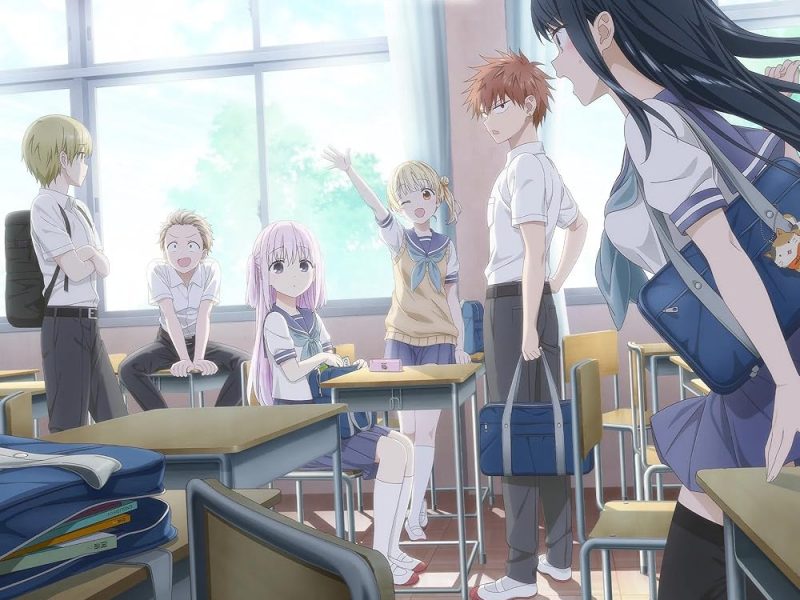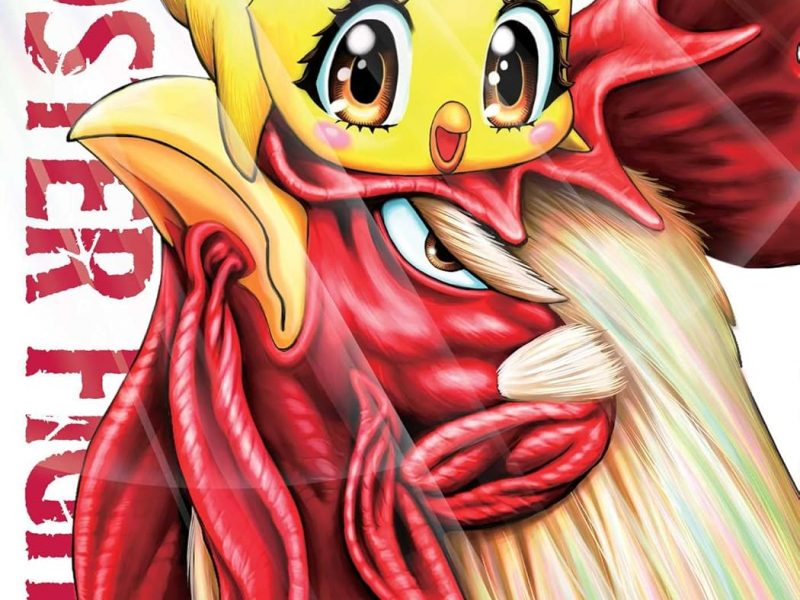REVIEW | "Witch Watch" Finds Its Magic in Animation Form
Let me be frank: when I heard that Witch Watch was getting an anime adaptation, I wasn’t exactly excited. I had reviewed the first two volumes of the manga, and while it had potential, it felt like it was lacking something strong. Yes, Kenta Shinohara’s original work had some funny parts to it, and the premise was interesting. However, the jokes didn’t exactly hit their mark in the way they should.
But because I wanted to give it a chance, I sat myself down and watched the anime version of Witch Watch. And it’s a good thing I did, because Bibury Animation Studios (The 100 Girlfriends Who Really, Really, Really, Really, Really Love You) somehow found the missing element to the manga’s humor. The problem wasn’t the jokes; it was the format they were showcased in. In order to truly get the punchline to deliver that TKO, they had to literally be put into motion.
That’s right: Witch Watch works far better as an anime than a manga!

The premise of the series is basically the same. A witch girl named Nico Wakatsuki (Rina Kawaguchi) finds herself with her childhood ogre friend Morihito Otogi (Ryota Suzuki), as her mother fears that Nico’s life may be in danger. As the story goes on, the house becomes more crowded thanks to the addition of the tengu Kanshi (Kohei Amasaki), werewolf Keigo (Kaito Ishikawa), and the vampire Miharu (Yuki Wakai). There is a rom-com element with Nico madly in love with Morihito as well, but that’s not exactly important to the story.
Where Witch Watch shines is whenever Nico attempts to use her magic. Sometimes it manages to do some good, such as giving her classmates the chance to fly and…okay, that’s probably the only time her magic doesn’t cause too much of a ruckus. Every other time Nico casts a spell, there are fewer solutions and more headaches on the menu. And most of the time, it’s very funny.

Case in point: Nico needs to move her stuff into Morihito’s home, but it’s all too heavy. (Suggestion: don’t collect EVERY volume of Golgo 13 and Kochikame.) So she casts a spell that duplicates herself, but halves her size and strength. Naturally, it causes her to make four versions of herself, resulting in the move taking longer. The joke works because not only does their system of moving fail in a visually hilarious way, it’s also very cute to watch unfold.
However, the real comedy doesn’t come from Nico nor Morihito; it’s Kanshi! A great example of this is the entirety of Episode 8, which focuses on the tengu’s part-time jobs. The hero show gig has him performing a not-at-all kid-friendly tokusatsu stage production, all with mundane daily routines and some BDSM kinkiness. Meanwhile, Kanshi’s screw-packing gig has him asking Nico to use her magic to help speed up his tasks. What it results in is a gag that’s way too silly to spoil here, all with a punchline payoff that lands with a knockout hit!

One of the best strengths of Witch Watch is its ensemble. Every main character finds a way to shine, even without trying. Whether it’s Nico’s fumbling magic skills, Morihito’s blunt personality, Keigo’s split personality, or Kanshi…erm, being Kanshi, these housemates deliver the goods with some solid timing and the right amount of goofiness. When the show focuses on this, that’s when it fires on all cylinders.
Alas, this anime suffers from what I like to call “Gintama Syndrome”. Like that classic anime comedy, the series is only great when it’s not focused on the main plot. I don’t know what it is about the premise involving Nico being targeted by warlocks, but for some reason, it slows down the progression of the series. Only when it goes back to being wacky fun does Witch Watch become a joy to watch.

This leads me back to what I was saying earlier: this series works better as an anime than a manga. These magic spells — from making clothes from magazine pictures to synchronizing movements with a friend — are so much more fun to watch than read. Motion can be a powerful thing, and when it comes to a series that leans heavily on physical humor, it helps to elevate the joke to greater heights. As such, it makes Kenta Shinohara’s original work so much funnier in cartoon form than in print.
And Bibury does a great job with adapting the manga, as well. The spells are showcased with such imaginative style, and the character designs are both cute and wacky. It also has a wonderful color design, with the series looking close to the manga cover art in both brightness and detail. Only when it comes time to elevate a joke does the animation get a little wonky, and that might be on purpose.

As for the voice cast, they do a fantastic job with the Witch Watch characters. Kawaguchi is both adorable and dorky as Nico, while Suzuki is sincere and blunt as Morihito. Amasaki goes all in with the big punchlines as Kanshi, throwing out one emotion after another in ways that’ll leave your sides aching with laughter. Perhaps the most impressive of the performances is Kaito Ishikawa, who delivers two different personalities as Keigo in both his human and werewolf forms.
Yukari Hashimoto (Mr. Osomatsu, If Her Flag Breaks) composes a soundtrack that is a lot stronger when the story’s more focused on being funny. While her more dramatic songs are good for whenever Witch Watch stops the humor, it’s in the goofier sounds where the score reaches solid heights. As for the opening and ending themes, they are hit-or-miss. YOASOBI finally delivers a theme song that fits well with the tone of the show with “Watch Me!”, with its cheery opening capturing the silliness the anime’s best at. I sadly can’t say the same about Hajimero’s OP “Tokihanate!”, which leans too heavily on the serious side of the story.

Meanwhile, Aooo’s “Maho wa Spice” is a full-blown joy to listen to and watch on the screen. I’m not sure where this band came from, but it honestly made me want to hear more of what they’ve created. While Yutori’s “Tsuki to Watashi no Kakurenbo” is a good song, it again takes things a little too seriously. There’s even an opening and ending theme for the show’s in-universe show Uron Mirage, with the only crime being that its ALI closer “Flashback Syndrome” can only be heard for a few seconds.
If you were like me and dropped the manga version of Witch Watch, then you might actually be surprised by its anime adaptation. The jokes work better, and the characters feel more alive than they do on the pages of a comic. While its main plot isn’t exactly interesting, the “magic spell of the week” aspect delivers a whole lot of entertainment value. I’m glad I gave Witch Watch a second chance, as Nico, Morihito, and the rest of the gang show why they put the “bruh” in “Abracadabra”!
Story:
Script:
Animation:
Voice Acting: (Japanese dub)
Soundtrack:
Final Grade (not an average):
Witch Watch can be viewed on Crunchyroll, Netflix, and Hulu. It has been licensed by GKIDS. Episodes 1-15 were observed for review. Promotional consideration provided by Crunchyroll.






